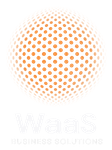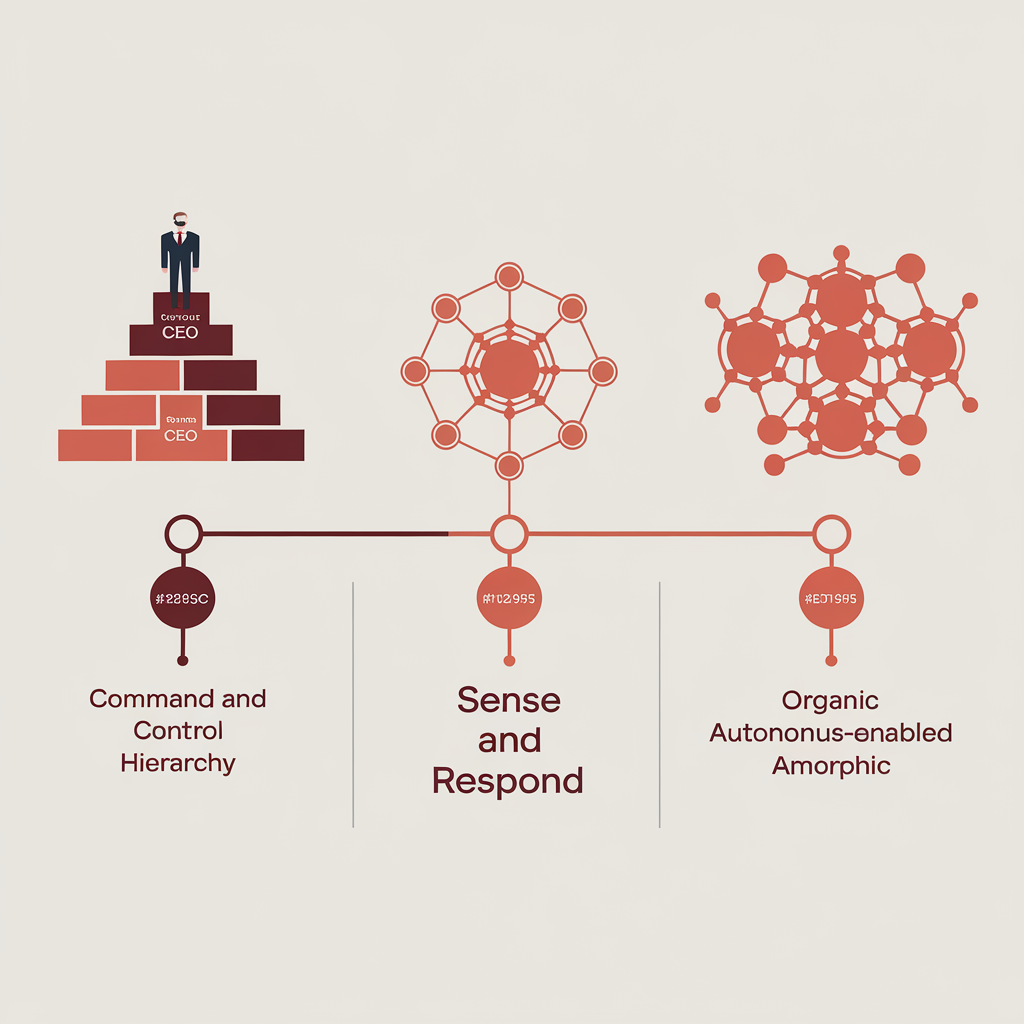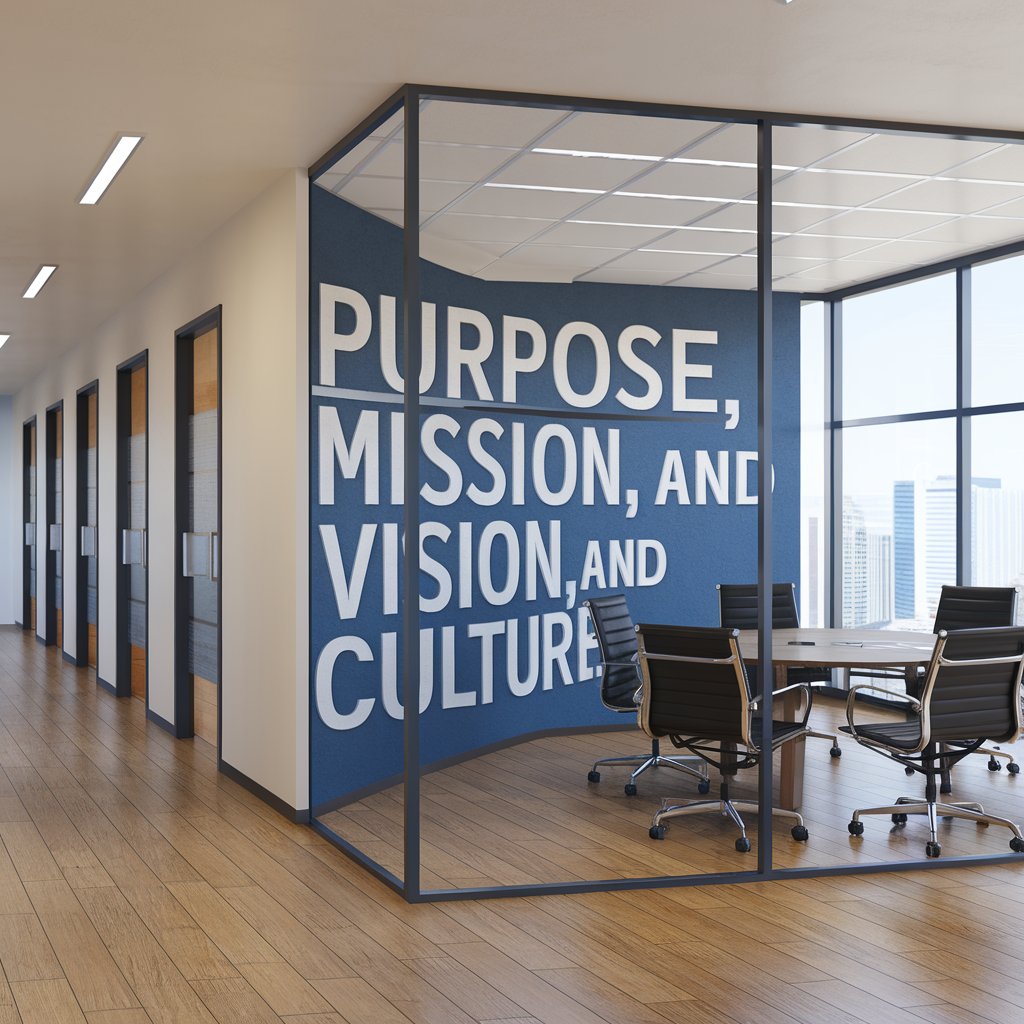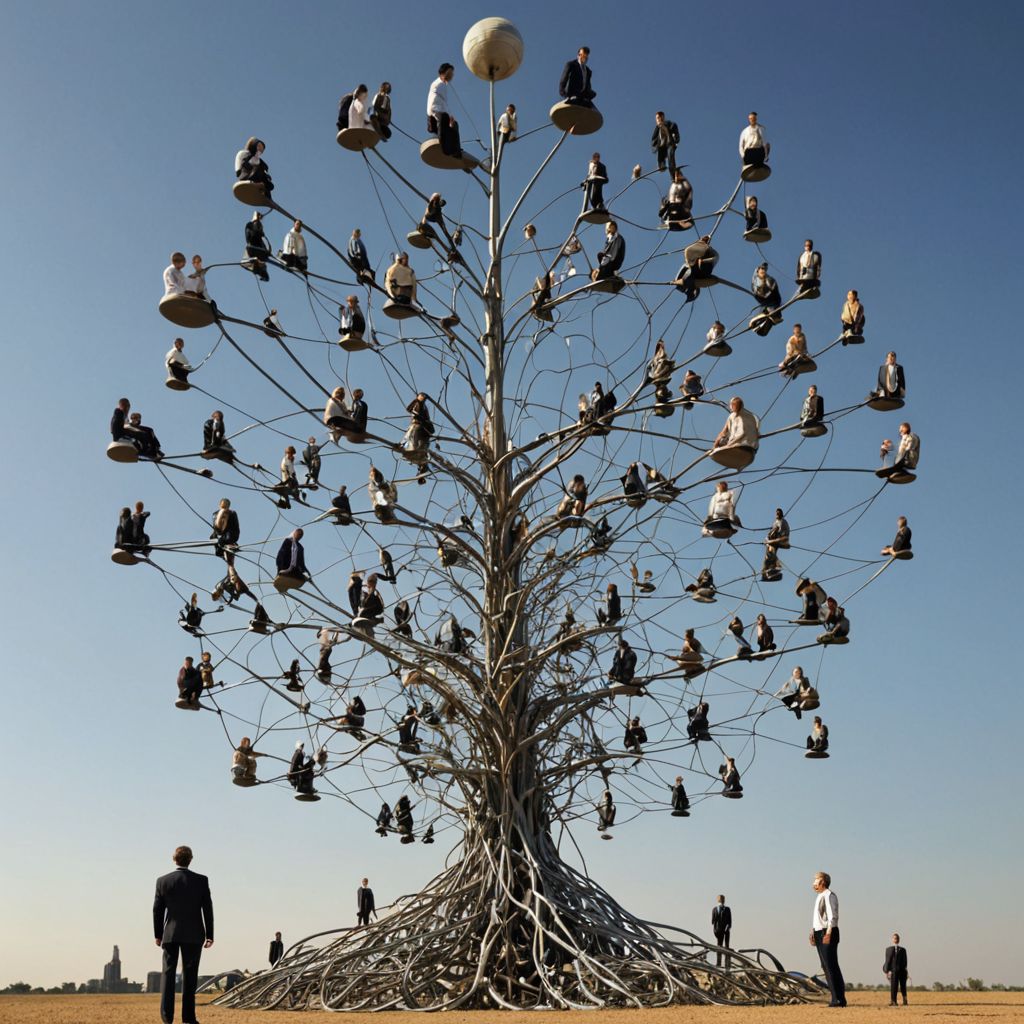The Evolving Landscape of Corporate Organizational Structures
In today’s rapidly changing business environment, how companies organize is undergoing a profound transformation. From traditional command-and-control hierarchies to agile, responsive networks and now to organic, holonic structures, organizations are adapting to meet the challenges of the 21st century. As explored by Platform Design Toolkit[1], three key factors are propelling this transformation: Technological advancements, cultural shifts, and a deeper understanding of how complex systems function. Let’s explore this fascinating journey and its implications for the future of work.
The Journey from Hierarchy to Holarchy
1. Command and Control
For decades, organizations relied on rigid, top-down hierarchies. These structures provided clear lines of authority but often struggled with adaptability and innovation. As discussed in the Harvard Business Review[2], hierarchical models faced many challenges as organizations scaled to meet the demands of more complex markets.
2. Agile Sense and Respond
As markets became more dynamic, companies shifted towards agile structures. These approaches emphasized flexibility, rapid iteration, and customer-centricity so that organizations could sense market changes and respond quickly. The Corporate Rebels blog[3] explores how progressive organizational structures have evolved to meet these new demands.
3. Organic with Holonic Structure
Today, we’re witnessing the emergence of organic, holonic structures. Inspired by biological systems and the Viable System Model (VSM)[4], these organizations function as a network of semi-autonomous, self-organizing units. Each “holon” operates independently while contributing value to and as part of the larger holarchical system, fostering both stability and adaptability.
This evolution reflects a growing understanding that organizations are complex adaptive systems, which can learn, evolve, and self-organize in response to their environment.
The Synergy of VSM, AI, and ML
The Viable System Model (VSM), developed by Stafford Beer, provides a framework for designing adaptive, resilient organizations. As explained by BusinessBalls.com[5], VSM views organizations as living systems with five interconnected subsystems that manage complexity and maintain stability while adapting to change. Artificial Intelligence (AI) and Machine Learning (ML) are now supercharging the VSM approach with:
- Enhanced sensing capabilities: AI-powered analytics help organizations better understand their environment and internal dynamics.
- Improved decision-making: ML algorithms can process vast amounts of data to support more informed and timely decisions.
- Adaptive processes: AI enables the creation of self-adjusting workflows that respond to changing conditions in real-time.
- Augmented human capabilities: AI tools empower employees to focus on higher-value tasks, enhancing creativity and strategic thinking.
By leveraging AI and ML within the VSM framework, organizations can create truly responsive, self-organizing structures that balance autonomy with coherence to drive innovation and resilience in an increasingly complex world. As discussed in Forbes[6], this integration is reshaping the very nature of management and organizational design.
Drivers of Organizational Evolution
The shift towards organic, holonic structures is influenced by several key factors:
1. Technology
Advancements in digital technologies, particularly AI and ML, have enabled unprecedented connectivity and data processing capabilities. This allows for more distributed decision-making and real-time adaptation to market changes. A study published in MDPI[7] explores how AI is reshaping organizational structures and decision-making processes.
2. Culture
The rise of knowledge work and changing employee expectations has led to a cultural shift favoring autonomy, purpose, and continuous learning. Organic structures align well with these values, fostering engagement and innovation. As discussed in a Medium article by Steve Meier[8], AI is necessitating changes in organizational structures and creating new roles.
3. Community
Organizations are increasingly recognizing the power of community-driven approaches. By leveraging internal and external networks, companies can tap into collective intelligence and create more resilient ecosystems.
4. Hyperlocal Influence
The ability to respond to local market nuances while maintaining global coherence has become crucial. Holonic structures enable organizations to be both locally responsive and globally integrated.
Collectively, these factors drive the evolution towards more adaptive, human-centric organizational models that can thrive in an era of constant change and increasing complexity.
Ronald Coase’s Insights in the Digital Age
Ronald Coase’s Transaction Cost Theory, which earned him a Nobel Prize, provides a crucial lens to understanding the evolution of organizational structures. Coase argued that firms exist to minimize transaction costs associated with market exchanges. In the context of modern AI-enabled organic structures, this means:
- Drastically reduced Information costs will enable more efficient coordination across organizational boundaries.
- Smart contracts and distributed ledger technologies will drive negotiation and enforcement costs down.
- Traditional boundaries of a firm will become more fluid, enabling dynamic collaboration networks: Ecosystems.
So, we’re likely to see even more flexible, network-based organizational forms emerge that will challenge traditional notions of firm and industry boundaries. This evolution aligns with the observations made in a Wiley Online Library article[8] about the impact of mobile internet on organizational structures.
Embracing the Organic Future
The evolution of organizational structures from command-and-control to organic, holonic models represents a fundamental shift in how we conceive and manage businesses. Enabled by AI and ML, guided by frameworks like the Viable System Model, and driven by changing cultural and technological landscapes, this transformation promises greater adaptability, innovation, and human-centricity.
As we look to the future, organizations that can harness these principles will be better positioned to navigate complexity, foster creativity, and create value in an increasingly interconnected world. The journey towards more organic, responsive structures is not just a trend, but a necessary adaptation for thriving in the 21st century and beyond.
[2] https://hbr.org/1998/05/evolution-and-revolution-as-organizations-grow
[3] https://www.corporate-rebels.com/blog/the-evolution-of-progressive-organizational-structures
[4] https://en.wikipedia.org/wiki/Viable_system_model
[5] https://www.businessballs.com/strategy-innovation/viable-system-model-stafford-beer/
[7] https://www.mdpi.com/0718-1876/16/6/129
[8] https://onlinelibrary.wiley.com/doi/10.1155/2021/5291973







Leave A Comment